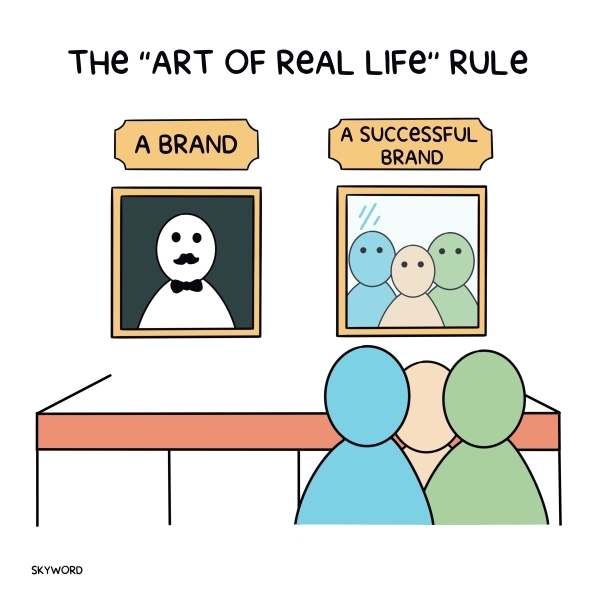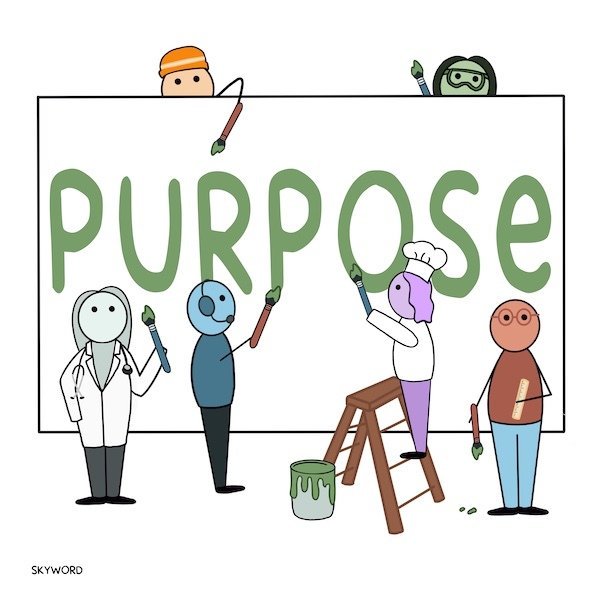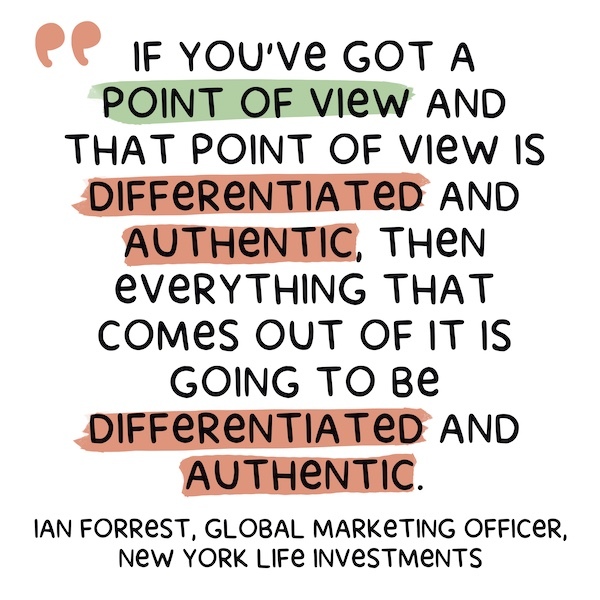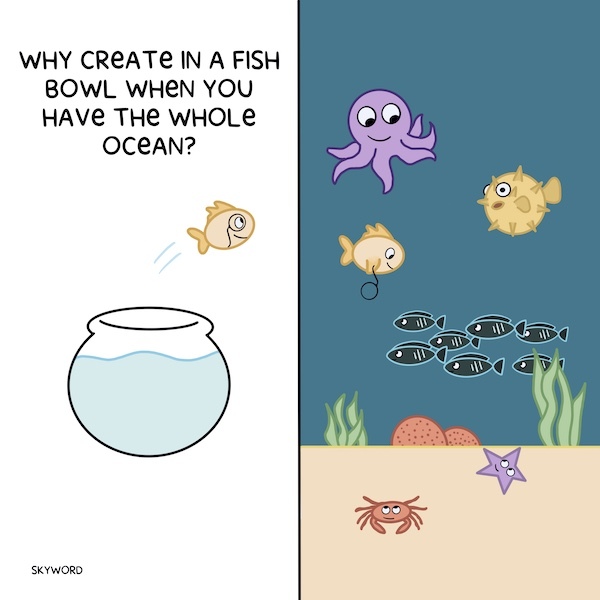Content Creation
It’s Time to Create with Diversity
By Andrew Wheeler on May 18, 2021
Subscribe to our monthly newsletter, Content & Context, to receive future insights and updates on the content marketing world from Skyword CEO, Andrew C. Wheeler.
Do you talk about diversity, or do you create with diversity?
Although it's always been true, more brands now recognize that fostering diversity, equity, and inclusion within their walls has a significant impact on their ability to bring creative, culturally intelligent thought to market.
At the same time, leading brands are prioritizing these values in their product and corporate development. Recent examples include Mastercard's Striver's Initiative supporting the journeys of Black women business owners and Unilever's Degree Inclusive, the world's first deodorant designed for people with visual impairment and upper-limb disabilities.
What's less frequently discussed is the diversity of the creators—the writers, editors, designers, and videographers—behind brand marketing content.
It's easy to point a finger at the Oscars and the Academy's lack of inclusivity. But outside high-profile Hollywood and major media companies, the same is happening.
It's time to take a look in the mirror and evaluate if our creator bases authentically represent our audiences' range of identities, cultural experiences, and points of view.

Creating with vs. Creating for
Creating with customers has long been a standard in product design. Why should creating content be any different?
One of the best ways to speak with authority and authenticity to your audience is to make a concerted effort to work with a range of individuals who have similar lived experience—whether it be personal or professional.
Creators who've walked in your audience's shoes can bring natural empathy, perspective, and depth of insight to the table that's nearly impossible for a marketing team to achieve on its own.
Purpose-driven brands like Eastern Bank continuously elevate social justice issues by publishing content written by members of the many communities they strive to serve. Last year they were named Shorty Award Finalists both for their work to advance LGBTQIA+ rights in partnership with activist, creator, and former Miss Trans Massachusetts, Lorelei Erisis, and their efforts to end systemic racism and wealth inequalities, which included creating content that elevates the voices of influential members of Boston's Black and LatinX communities.
With this approach, Eastern Bank isn't just covering topics that matter to those communities; they're amplifying the voices and perspectives of individuals who add meaningful value to the conversation.
Hand in hand with creators, they're putting their purpose into action.

Or take WGU, an online teachers college whose target audience is aspiring and advancing educators. Their creator team includes teachers, counselors, and school administrators from all walks of life and teaching backgrounds who share authentic insights into the full spectrum of whimsical, wonderful, and challenging experiences that come with being an educator at every level.
Rich with stories and advice that resonate with their audience, WGU's Hey Teach! blog helped the brand carve out a distinctive editorial position in a jam-packed market. Quickly, the content's relatability hit the right notes with educators, which showed in the brand's results.
Building a content team that reflects and includes your audience isn't a marketing tactic. It's fundamental to being a modern brand.
So in the months ahead, as you continue creating more and more content, I recommend taking a moment to think about old habits. You might find, like I did, that change is in order. Although I'm infinitely proud of what Skyword stands for and has accomplished, this exercise showed me that we still have work to do to expand the team of creators we partner with on our own content.
Here are some questions we're asking ourselves (and our clients) that may also help you:
Are we depicting a limited view of our industry?
It's important to honor the fact that no one group "owns" a topic or industry.
By employing a more diverse pool of creators, brands celebrate a fundamental reality of society: the passions and challenges their content addresses are shared by people of different cultures, ethnicities, genders, mindsets, and walks of life.
Despite the eclecticism inherent in categories like travel, food, and beauty, minority creators (and audiences) are still underrepresented. Disparities are even more significant across industries like healthcare, tech, and finance.
It's critical to expand representation on your creator team and to do so without pigeonholing creators into writing solely about personal identity.
A creator's skill is the primary value they bring to their work, and all creators should have equal opportunity to exercise their talents and make a living pursuing their passions.
Giving exposure (and fair compensation) to a wealth of underrepresented talent in the marketplace supports their success and yours.
Are we engaging creators who have walked in the shoes of the audiences we serve?
Brands are responsible for developing the customer intimacy and cultural awareness necessary to understand the unmet needs of their audiences.
Developing content that resonates with those audiences requires also thinking critically about the alignment between content topics and creators.
New York Life Investments, for example, recognized that financial advisors were overlooking the needs of women clients, and they developed a content strategy to bridge the gap.
Rather than leaning on male financial advisors or industry generalists to articulate the needs of women investors, the brand worked with women experts in finance & investing.
The result? A host of solutions-oriented content that dispels myths about women investors and insightfully informs fellow advisors on how to course-correct—all written from a female investor point of view.

Are we evolving how we bring our purpose to market?
A great deal of today's brand-creator dynamic involves asking creators to assimilate. After all, there's the brand voice, brand guidelines, and brand point of view to protect.
But elevating the perspectives of creators from different walks of life can add new dimensionality to the brand lens, bringing long-standing purpose to life in fresh and creative ways.
Reflect on your brand purpose and ask how broader perspectives can play a role.
If you're a home goods brand, could you partner with culturally diverse interior designers to share their individual takes on modern style? If you're an ed-tech company, could you work with an interdisciplinary group of educators on content that re-imagines how curriculums are created and taught?
Invigorating time-worn conversations with new lenses and ideas is how you lead and claim relevance in a fast-changing world.

Who is creating our content?
If you haven't stepped back and asked yourself this question—and assessed how your creators align to the lived experience of your audience—now is the time.
As content creation partners, we take pride in inspiring brands to think bigger and in acting as connectors between brands and a diverse community of top talent who bring the art of real life to their content. As leaders, we expect no less of ourselves.
I know I've harped on the value of freelance talent a lot recently, but for good reason. Know that even if you now have a rockstar group of creators on your team, there's also a limitless universe of freelance creative talent out there to partner with in exciting, memorable, and meaningful new ways.
As an industry, we have to do better, and we can do better now.
Featured image attribution: Lukas Dlutko from Pexels

